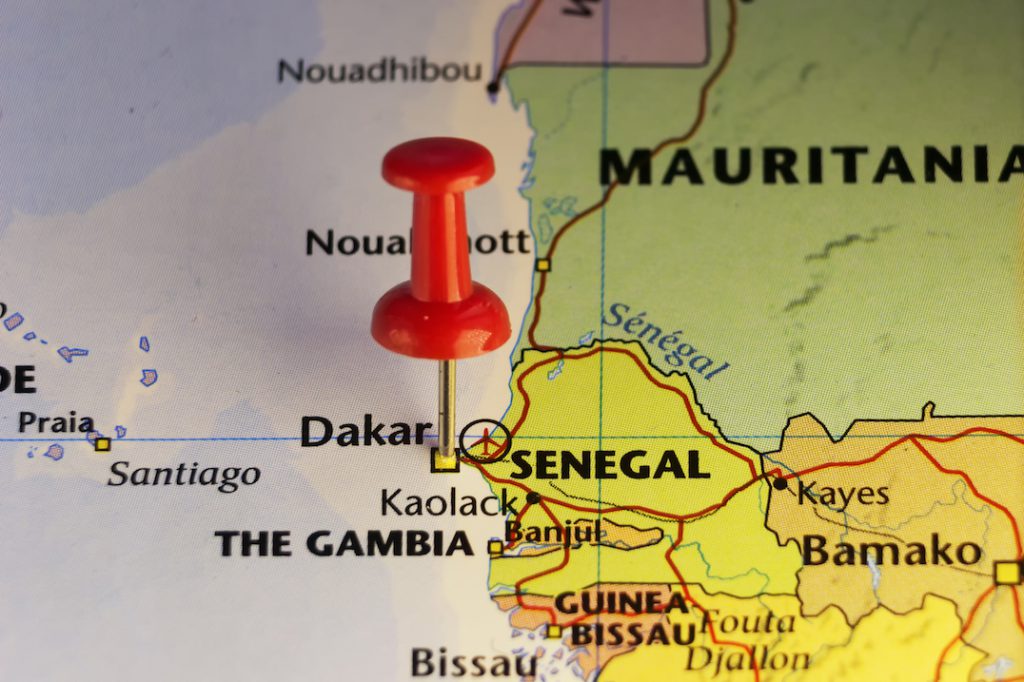A West African Window Into Human Evolution

This article was originally published at The Conversation and has been republished under Creative Commons.
Our species, Homo sapiens, rose in Africa some 300,000 years ago. The objects that early humans made and used, known as the Middle Stone Age material culture, are found throughout much of Africa and include a vast range of innovations.
Among them are bow and arrow technology, specialized tool forms, the long-distance transport of objects such as marine shells and obsidian, personal ornamentation, the use of pigments, water storage, and art. Although it is possible that other ancestors of modern humans contributed to this material culture in Africa, some of the earliest Middle Stone Age stone tools have been found with the oldest Homo sapiens fossils found so far.
The textbook view is that by around 40,000 years ago, the Middle Stone Age had largely ceased to exist in Africa. This was a milestone in the history of our species: the end of the first and longest-lasting culture associated with humanity, and the foundation for all the subsequent innovations and material culture that define us today.
Despite its central role in human history, we have little understanding of how the Middle Stone Age ended. Such an understanding could tell us how different groups were organized across the landscape, how they may have exchanged ideas and genes, and how these processes shaped the later stages of human evolution.
Unfortunately, vast swaths of Africa remain nearly complete blanks on the map when it comes to such deep history, making it difficult to address these questions. Research has tended to focus on areas such as Eastern Africa, where preservation is known to be high, understandably minimizing risks and maximizing gains. However, the emerging consensus that all of Africa played some role in human origins means that we can no longer afford to neglect vast regions of the continent if we want to reconstruct our evolution in a realistic framework.
For these reasons, my colleagues and I have been focusing on West Africa, one of the least understood African regions for human evolution. And our recent work is validating earlier claims of a rich Middle Stone Age past.
New work in Senegal
In 2014, our work in Senegal led to the discovery of a site in the country’s north that suggested the Middle Stone Age ended there far more recently than the textbooks suggested. Several young dates in West Africa had been reported in the past, but the work was largely dismissed owing to problematic dating conducted before the present-day standards existed.
Dates from Ndiayène Pendao indicated that the site was around 12,000 years old. Yet the material culture was classically Middle Stone Age, without any Later Stone Age tools or production methods. In 2016 and 2018, we returned to the field to look for sites in different regions of Senegal and on different river systems, on tributaries of the Senegal and the Gambia. This is because sources of fresh water were critical to people in the past, just as they are to people today; river terraces also often offer excellent preservation conditions and are therefore good places to search for archaeological sites.
The site of Laminia on the Gambia had never been dated. We conducted a detailed assessment of its rock layers to obtain dating samples we could confidently link to the artifacts.
This was the first time such old material culture had been found in such recent times in Africa.
The samples returned a date of 24,000 years ago for the site, which confirmed that a young Middle Stone Age was indeed present in the region.
The site of Saxomununya produced an even greater surprise. As the classically Middle Stone Age artifacts, such as retouched Levallois points and “scrapers,” from this site were found upon and within a young terrace of the Falémé River, it was obvious that the site was relatively young. However, the date of 11,000 years ago took the youngest Middle Stone Age into the Holocene epoch, the period after the last major ice age. This was the first time such old material culture had been found in such recent times in Africa. It indicated that the results from Ndiayène Pendao were neither a fluke nor an error.
These results extend the last known occurrence of the Middle Stone Age by a staggering 20,000 years. At the same time, work by colleagues in Senegal also suggested an equally late first occurrence of the Later Stone Age at around 11,000 years—younger than in most other African regions.
Why did the Middle Stone Age last so long and why did the Later Stone Age arrive so late?
Population expansions
Part of the answer to the first question may lie in the fact that parts of West Africa appear to have been less affected by the extremes of repeated cycles of climate change. This may have created stable environmental conditions over a long period of time. As a result of such stability, a finely tuned toolkit that had worked well for millennia might not have needed to change, regardless of the social complexity of the people who made the tools.
The answer to the second question lies in the fact that this region of Africa was relatively isolated. To the north, it meets the Sahara Desert, and to the east, there are the Central African rainforests, which were often cut off from the West African rainforests during periods of drought. However, around 15,000 years ago, there was a major increase in humidity and forest growth in Central and Western Africa. ![]() This may have linked different areas and provided corridors for the dispersal of human populations. This may have spelled the end for humanity’s first and earliest cultural repertoire and initiated a new period of genetic and cultural mixing.
This may have linked different areas and provided corridors for the dispersal of human populations. This may have spelled the end for humanity’s first and earliest cultural repertoire and initiated a new period of genetic and cultural mixing.
What is clear is that the long-held simple unilinear model of cultural change toward “modernity” is not supported by the evidence. Groups of hunter-gatherers embedded in radically different technological traditions may have occupied neighboring regions of Africa for thousands of years, and sometimes shared the same regions. Long isolated regions, on the other hand, may have been important reservoirs of cultural and genetic diversity. This matches genetic studies and may have been a defining factor in the success of our species. Our findings are a reminder of the dangers of ignoring gaps on the map.

































